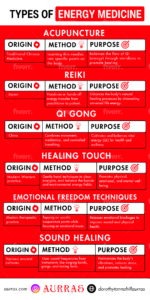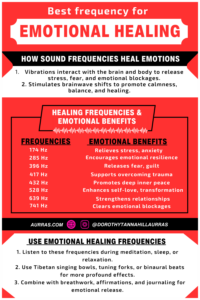A good night’s sleep is essential for mental clarity, emotional resilience, and overall health. Yet, for many, the path to deep, restorative sleep can feel elusive. If you’ve struggled with insomnia, restless nights, or waking up feeling unrefreshed, you’re not alone. The solution? Sound therapy may hold the key to unlocking your deepest, most rejuvenating sleep yet.
In this guide, we’ll explore how sound healing promotes deep sleep, the science behind it, and how you can integrate it into your nightly routine for transformative results.
The Science of Sound and Sleep
Our brainwaves dictate our sleep patterns. Deep sleep, also known as the slow-wave sleep phase, is characterized by delta brainwaves (frequencies between 0.5 and 4 Hz). During this phase, the brain and body undergo crucial repair processes, including memory consolidation, immune system strengthening, and cellular regeneration.
Sound therapy works by promoting brainwave entrainment, where rhythmic sound patterns synchronize the brain’s activity to desired frequencies. Instruments like Tibetan singing bowls or soundtracks featuring binaural beats in the delta frequency range are particularly effective in guiding the brain into a deeply relaxed state conducive to sleep.
Studies also show that sound can reduce cortisol, the stress hormone that often interferes with sleep, and stimulate the parasympathetic nervous system, which helps the body transition into rest mode.
How Sound Therapy Promotes Deep Sleep
Calming the Nervous System
Soothing sounds, such as rain or gentle instrumental tones, lower heart rate and blood pressure. When your nervous system is calm, your body is more prepared to enter sleep cycles without disruptions.
Reducing Overactive Thoughts
One of the primary culprits of insomnia is a racing mind. Sounds like white noise or low-frequency tones can mask external distractions and quiet mental chatter, making it easier to drift off.
Regulating Circadian Rhythms
Sound therapy can signal the body to wind down in the evening. Paired with consistent sleep routines, it reinforces the natural circadian rhythm, helping your body adapt to healthy sleep patterns.
Here’s a breakdown of popular sound healing tools you can use for deep sleep:
Binaural Beats: Audio tracks designed to stimulate brainwave activity by playing slightly different frequencies in each ear. Delta binaural beats are ideal for inducing sleep.
Singing Bowls: Often tuned to specific chakras or frequencies, their vibrations resonate deeply with the body, promoting relaxation and emotional release.
Nature Sounds: Waterfalls, rain, or wind sounds are universally calming and remind the body of safe, restful environments.
White, Pink, and Brown Noise: These sounds mask background disturbances. Pink and brown noise, with their deeper tones, are particularly beneficial for sleep.
Curious about the emotional benefits of sound healing beyond sleep? Check out 5 Vibrational Healing Tools for Self-Care.
A Nightly Sound Therapy Routine for Deep Sleep
Creating a sound-based sleep routine can be simple. Here’s a step-by-step guide:
Set the Environment
Dedicate a quiet, clutter-free space for relaxation. Dim the lights and eliminate distractions like phones or TV.
Pre-Bed Relaxation with Sound
Begin with 10-15 minutes of sound therapy using a singing bowl or a delta-wave binaural beats track. Pair this with deep breathing or light stretches.
Meditative Listening
Lie in bed and listen to soothing instrumental music or nature sounds. Allow the sound to wash over you, guiding your thoughts away from the day’s stressors.
Consistency is Key
Like any habit, the effectiveness of sound healing grows with regularity. Try to incorporate sound therapy into your nightly routine at least 4-5 times a week.
Week-by-Week Benefits Timeline
Here’s what to expect as you incorporate sound therapy into your sleep routine:
Weekly Progress Timeline: Deep Sleep Through Sound
Week 1: In the initial week, sound therapy sets the stage for relaxation. As your body and mind respond to calming vibrations or soundscapes, you might find it easier to fall asleep, even if some sleep interruptions remain. This phase is about introducing your nervous system to a new rhythm, signaling the transition into restfulness. Techniques like binaural beats or Tibetan singing bowls can create a soothing environment that gradually quiets intrusive thoughts.
Week 2: By the second week, you may notice a deeper quality of sleep starting to take shape. Your body begins to adjust to the consistent use of sound therapy, facilitating restorative slow-wave sleep. Waking up slightly more refreshed and with a clearer mind could become part of your routine, even if full rejuvenation isn’t yet achieved. This is the phase where your brain’s natural patterns start synchronizing with the therapeutic sounds.
Week 3: The transformative effects of sound therapy often become more noticeable in week three. You may find that nighttime awakenings diminish, bedtime becomes less plagued by intrusive thoughts, and your overall mood improves throughout the day. A deeper sense of relaxation carries over into waking hours, creating a positive cycle of emotional and physical well-being.
Week 4 and Beyond: By the fourth week, consistent sound therapy has likely enhanced your overall sleep quality. Nights feel longer, uninterrupted, and more restorative. Waking up feels natural, with a brighter outlook on the day ahead. The long-term benefits of sound therapy, such as reduced stress, improved cognitive function, and heightened emotional balance, often become part of your daily life.
The Transformative Effects of Sound Therapy
Scientific studies and anecdotal evidence alike support the role of sound therapy in enhancing sleep quality. Techniques like delta binaural beats and sound baths work by targeting stress and tension, key factors that disrupt sleep. Binaural beats, in particular, guide the brain into slow-wave sleep, while the harmonic vibrations from sound baths encourage physical relaxation. These tools offer accessible, non-invasive ways to achieve deep sleep and rejuvenation, with benefits that extend to your overall well-being.
The Role of Personal Exploration
While the benefits of sound healing for sleep are well-documented, each person’s experience is unique. Experiment with different tools and frequencies to find what resonates best with your body and mind. Some may find delta waves most effective, while others may prefer the soothing hum of singing bowls or the steadiness of pink noise.
Don’t be afraid to mix it up. For example:
Alternate between binaural beats and nature sounds depending on your mood.
Combine sound therapy with other relaxation techniques, such as yoga or journaling, to create a holistic evening routine.
Why Sound Healing Works
Sound therapy works because it aligns with the body’s natural processes. The vibrations from sound tools engage the body’s parasympathetic nervous system, calming the “fight or flight” response and encouraging the relaxation needed for deep sleep. Additionally, sound creates an immersive sensory experience that shuts out external distractions and mental clutter. By focusing solely on the auditory stimuli, the mind can let go of the stresses of the day, making way for a peaceful night’s rest.
Deep, restorative sleep is no longer a luxury—it’s a necessity for physical, mental, and emotional well-being. Sound healing provides a natural, non-invasive solution to common sleep struggles, using the power of vibration and frequency to nurture the body and mind.
Whether you’re drawn to the resonant hum of a singing bowl, the subtle magic of binaural beats, or the grounding presence of nature sounds, sound therapy offers something for everyone. Start small, stay consistent, and let the healing vibrations guide you to the deep, rejuvenating sleep you deserve.
With sound as your ally, a better night’s sleep is just a vibration away.






